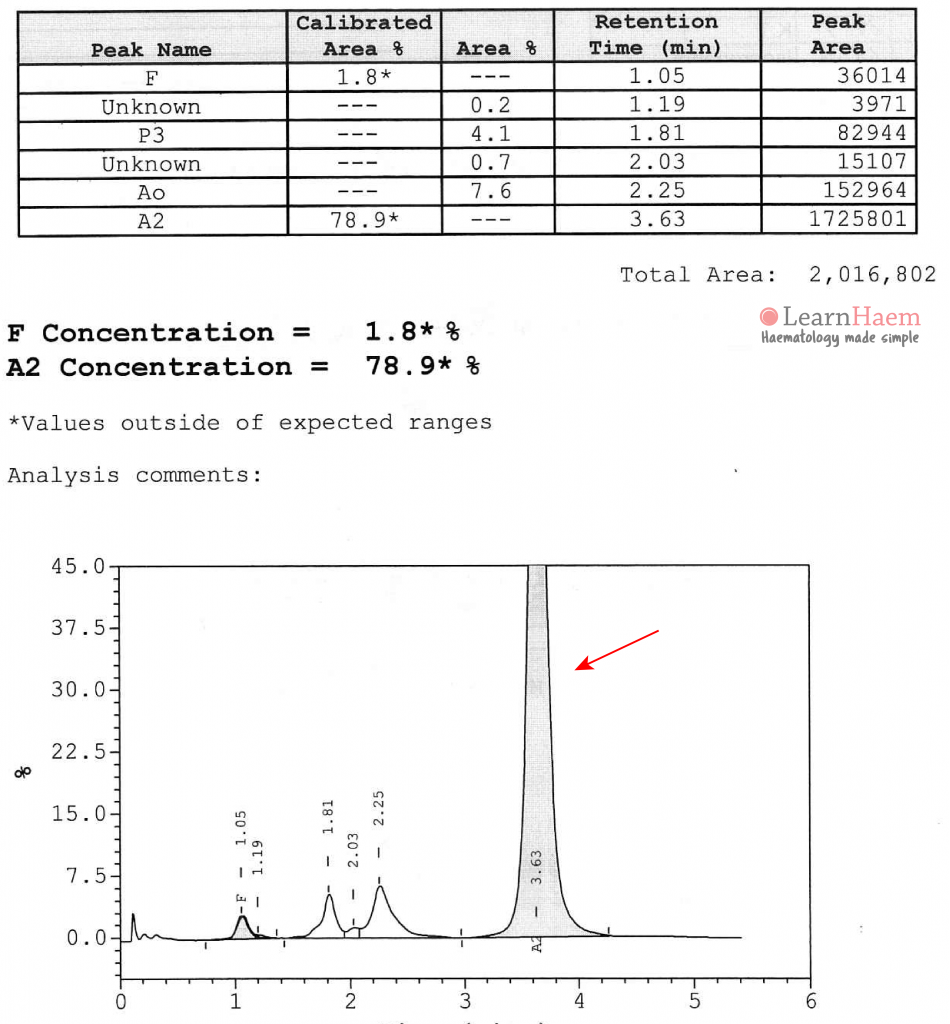Haemoglobin E is a variant haemoglobin caused by a point mutation in the ß globin gene. It is common in Southeast Asia and the Indian subcontinent. It can interact with ß thalassaemia, resulting in a phenotype ranging from non-transfusion dependent thalassaemia to transfusion-dependent thalassaemia. Hb E heterozygotes are asymptomatic with normal haemoglobin values.
Because Hb E is a variant haemoglobin produced at a reduced rate, the typical fraction of the variant haemoglobin is ~30%.


Blood film from a patient with homozygous ßEßE. The most striking feature is the microcytic, hypochromic anaemia with an abundance of target cells.
Haemoglobin Electrophoresis

Alkaline gel electrophoresis from a patient with homozygous HbE. There is no normal haemoglobin A. There is a variant haemoglobin with the mobility of haemoglobin C (red arrow). The differentials for this variant are haemoglobins E, O-Arab and A2.

Acid gel electrophoresis from a patient with homozygous HbE. There is a band with the mobility of haemoglobin A (red arrow). This excludes haemoglobin C (mobility of C) and O-Arab (mobility of haemoglobin S) as potential causes for the variant on the alkaline gel.
HPLC

HPLC from a patient with homozygous HbE. There is no normal haemoglobin A. There is a variant haemoglobin with a retention time corresponding to haemoglobin A2. This is haemoglobin E.
Heterozygous Hb E
Patients who are heterozygous for haemoglobin E are asymptomatic with a normal haemoglobin value. Microcytosis is typically absent or mild. Patients have a normal haemoglobin A with a typical fraction of ~70%. The variant haemoglobin E fraction is typically around 30% as it is synthesized at a reduced rate (i.e., it is a thalassaemic variant haemoglobin). Co-inheritance of α mutations decreases the fraction of the variant haemoglobin by ~5% for each deleted α globin gene. Co-inheritance of –/-α results in AE Bart’s disease.


Leave A Comment